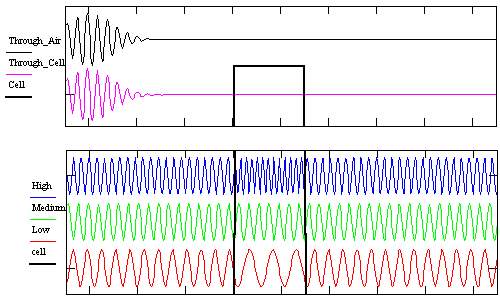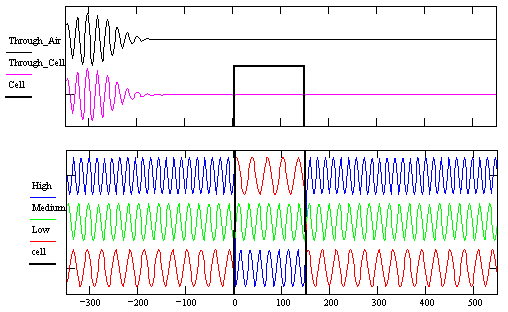
Group Velocity in Dispersive MediaI. Positive (normal) dispersion. This is what happens in most light-matter interaction. The medium has higher index of refraction for higher frequencies; the frequency components of a pulse are dispersed such that the long wavelengths become even longer, the short ones even shorter. When they recombine to create a new pulse after going through the cell, the pulse appears delayed (the red pulse, travelling through medium, is delayed from the black pulse, travelling through air). Hence, the group velocity (velocity of the pulse) is smaller than c.

II. Negative (anomalous) dispersion. If the medium has lower index of refraction for higher frequencies; the frequency components of a pulse are dispersed such that the long wavelengths become shorter, the short ones become longer. When they recombine to create a new pulse after going through the cell, the pulse appears advanced, in fact there is another pulse already in the cell. The output pulse appears even before the input pulse entered the cell fully. Hence, the group velocity (velocity of the pulse) is higher than c.

Arthur Dogariu, Sept. 2000, NEC Research Institute